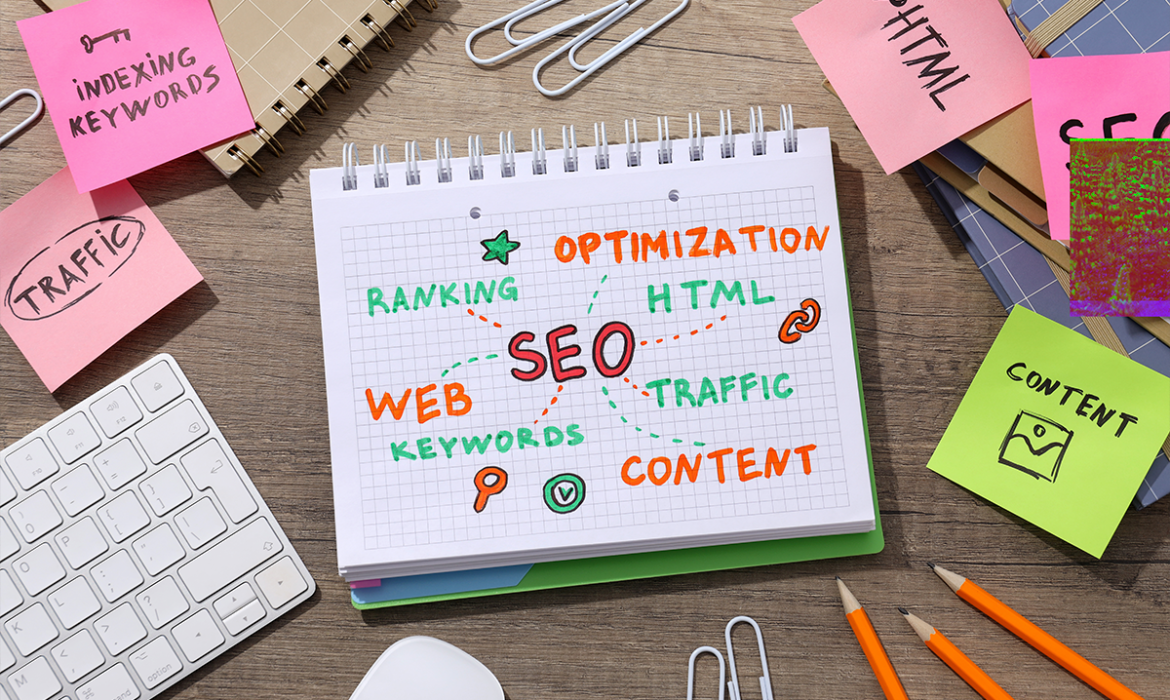The Importance of User-Generated Content in Building Trust
The Importance of User-Generated Content in Building Trust
In today’s digital world, brands are in a constant competition to capture consumers’ attention. Amidst this saturation of information and advertising, users are looking for more authentic and reliable sources of information before making purchasing decisions. This is where user-generated content (UGC) becomes a key tool for companies that want to establish a relationship of trust with their audience.
User-generated content refers to any type of content — whether reviews, photos, videos, or testimonials — created and shared by consumers themselves, rather than the brand. This content has become increasingly valuable because it provides a genuine, unmanipulated perspective on a product or service. Unlike traditional ads, UGC gives potential customers a more realistic view of what they can expect from a brand, making it an essential element in building trust.
One of the biggest benefits of user-generated content is that it acts as social proof. Consumers tend to trust the opinions and experiences of other users more than direct advertising from the company. Seeing other customers using and enjoying a product can have a profound impact on purchasing decisions, as it reduces the perception of risk. In fact, studies have shown that consumers trust recommendations from other users up to five times more than those from brands. This underscores the importance of incorporating UGC into marketing strategies.
User-generated content not only builds trust, but it also drives engagement and interaction with the brand. When businesses encourage customers to share their experiences, whether through social media or review platforms, they are fostering an open, two-way conversation. This not only strengthens customer loyalty, but also increases brand visibility. User-generated posts can reach new audiences, expanding the company’s reach organically and authentically.
Another reason user-generated content is so effective at building trust is its ability to humanize brands. In a world where digital interactions can feel impersonal, UGC allows brands to show the human side of their business. Photos and videos of real customers using the products, or candid testimonials about their experience, provide a touch of authenticity that traditional ads can’t offer. This emotional connection is critical to building trust and fostering long-term customer relationships.
Implementing a solid user-generated content strategy can also be a cost-effective way to improve brand presence. Instead of investing large amounts in advertising campaigns, businesses can leverage content created by their own customers. Brands that promote contests, specific hashtags, or simply encourage users to share their experience can generate a significant amount of valuable content without needing to spend on production. Not only is this approach cost-efficient, but it also produces content that resonates more deeply with the audience.
For user-generated content to be effective, it’s critical for brands to be transparent and authentic in how they handle it. Manipulating or fabricating UGC can have negative consequences and destroy the trust they’re trying to build. Brands should showcase content as users create it, even if it’s not perfect, as imperfection can provide an extra layer of credibility.
User-generated content is a powerful tool for building trust in today’s digital world. It acts as social proof, encourages engagement, and humanizes brands in ways that traditional methods can’t. Businesses that leverage this resource can not only strengthen their relationship with current customers, but also attract new consumers looking for a reliable source of information. If you want to dig deeper into how UGC can transform trust in your brand, you can visit this link .
How to Use Retargeting Ads to Increase Conversions
How to Use Retargeting Ads to Increase Conversions
Retargeting is one of the most effective strategies for increasing conversions in digital marketing campaigns. Often, users who visit a website for the first time do not make a purchase or complete a desired action. In fact, studies show that over 90% of website visitors leave without converting. This is where retargeting comes into play, allowing advertisers to re-engage these users and encourage them to return to the site to complete the conversion.
Retargeting , also known as remarketing, works by using cookies to track users who have previously interacted with a website. These cookies allow personalized ads to be shown on other platforms, such as social networks or third-party sites, reminding the user about products or services they previously viewed. The main goal of retargeting is to keep the business in the consumer’s mind, increasing the chances of them taking action in the future.
One of the biggest benefits of retargeting is its ability to precisely segment your audience. By tracking user behavior, you can create highly personalized campaigns that show targeted ads based on the user’s previous interactions with your website. For example, if a visitor has added products to their shopping cart but hasn’t completed the transaction, you can show them ads reminding them of the items they left unchecked. This personalization can be key to motivating the user to return and complete the purchase.
There are different types of retargeting that can be used to increase conversions, with website retargeting being the most common. This type of ad follows users who have visited your site and shows them ads on other digital platforms. Another type is search retargeting, which allows you to show ads to people who have searched for keywords related to your business but have not yet visited your page. There is also list-based retargeting, where you can upload a list of customer emails and show them ads on social media or third-party websites.
For a retargeting campaign to be truly effective, it is crucial to create visually appealing and relevant ads. Ads must capture the user’s attention, but they must also be persuasive enough to encourage action. A recommended approach is to use clear messaging and direct calls to action. Showing exclusive discounts, free shipping, or a limited-time offer can be a great tactic to motivate users to come back and complete the purchase.
Retargeting should be used strategically to avoid overwhelming users with too many ads. It is important to set an appropriate frequency for displaying ads so that users do not feel bombarded or annoyed. The balance between visibility and non-intrusiveness is key to ensuring that retargeting does not backfire and drive away potential customers.
Another important tactic is to analyze the performance of your retargeting campaigns on an ongoing basis. By monitoring key metrics such as click-through rate (CTR) and cost per conversion, you can make adjustments in real time to optimize your campaign. Experimenting with different ad formats, copy, and creative is key to finding what works best with your audience. Additionally, using analytics tools can help you identify which segments of your audience are responding best to your ads, allowing you to fine-tune your targeting further.
Retargeting is a powerful tool for increasing conversions and recovering otherwise lost leads. Its ability to personalize ads and target users at the right time makes it an indispensable strategy in digital marketing. If you want to learn more about how to implement an effective retargeting campaign , you can visit this link .
The Role of Artificial Intelligence in Content Creation
The Role of Artificial Intelligence in Content Creation
Artificial intelligence ( AI) has profoundly transformed the way content is generated and distributed today. This technology, which has made impressive progress in recent decades, has gone from being a futuristic tool to a key resource in the daily lives of creators, companies and marketers. In this context, AI is revolutionizing content creation, providing greater efficiency, precision and personalization.
One of the most notable aspects of artificial intelligence in content creation is its ability to automate repetitive and time-consuming processes. Through the use of advanced algorithms, AI tools can generate written content, edit videos, and create images in a matter of minutes, allowing creators to focus on more strategic and creative tasks. This automation not only saves time but also increases consistency and reduces human error.
In the realm of content marketing, artificial intelligence has enabled more precise personalization. AI algorithms analyze large volumes of user data to understand their interests, behaviors, and preferences. With this information, businesses can create highly relevant and targeted content for their audience, improving user experience and increasing the likelihood of conversion. This data-driven approach also makes it possible to adjust content strategies in real time, continuously optimizing campaigns based on audience behavior.
Furthermore, AI has given rise to the creation of natural language processing (NLP) tools, which are capable of understanding, interpreting, and generating text in a similar way to how a human would do it. These tools are being used by journalists, bloggers, and businesses to automatically write articles, summaries, and reports. While AI-generated texts still require human supervision to ensure consistency and proper tone, NLP technologies have significantly improved the quality and relevance of content.
Another field where artificial intelligence is playing a crucial role is in search engine optimization (SEO). AI platforms can analyze search patterns, identify relevant keywords, and suggest modifications to content to improve its visibility in search results. By understanding how users interact with content and how search algorithms prioritize information, AI-based tools allow creators to adapt their content strategies to reach a wider audience and rank higher in search engines.
Visual content generation has also benefited greatly from artificial intelligence. Tools such as generative adversarial networks (GANs) allow for the creation of high-quality images and videos that can be used in advertising campaigns, social media, or websites. These technologies not only speed up the process of creating visual content, but also open up new creative possibilities, allowing for the generation of original content that does not rely on pre-existing material.
Despite all the advances, artificial intelligence does not completely replace the human touch in content creation. Creativity, intuition and the ability to emotionally connect with the audience are characteristics that, until now, remain dominated by humans. AI, rather than replacing creators, acts as a complement that improves their productivity and allows companies to offer more personalized and engaging content.
Artificial intelligence has transformed content creation by automating tasks, personalizing experiences, optimizing SEO strategies, and generating high-quality visual content. This rapidly evolving technology promises to continue to redefine how businesses and creators approach content generation in the future. If you want to learn more about how AI is revolutionizing content creation, you can visit this link .
How to Build a Strong Employer Brand through Marketing
How to Build a Strong Employer Brand through Marketing
Building a strong employer brand is essential to attracting and retaining top talent in today’s competitive marketplace. Employer brand is the image and reputation a company projects as an employer, and is directly related to how the company is perceived in terms of culture, values, growth opportunities, and treatment of employees. Using marketing strategies can be an effective way to create a strong, consistent image that resonates with potential candidates and current employees.
One of the first steps to building a strong employer brand is to clearly define your employee value proposition (EVP). The EVP describes what makes your company unique as an employer, including benefits, organizational culture, work-life balance, and career development opportunities. This proposition should be authentic and reflect the company’s true values, as a false or exaggerated representation can result in high employee turnover and damage the brand’s reputation in the long run.
Once the EVP has been defined, it is important to communicate it effectively across the various marketing platforms. Social media plays a crucial role in building a strong employer brand, as it allows companies to showcase their internal culture and achievements. Posting images and videos highlighting employees, sharing success stories within the organization, and showcasing internal events are powerful ways to humanize the company and attract candidates looking for a positive and collaborative work environment.
The company website is also an essential tool for promoting the employer brand. The “careers” section on the website should be designed not only to showcase job opportunities, but also to convey the company’s culture and values. Include employee testimonials, a look at the offices and important projects, and an emphasis on benefits and growth opportunities. All of this will help candidates better understand what they can expect if they join the organization.
Employee-generated content is another key component in building a strong employer brand. Current employees can be the company’s most valuable ambassadors. Encouraging employees to share their positive experiences on social media or on job review platforms can significantly improve the external perception of the company. A genuine employee testimonial carries more weight with potential candidates than any formal marketing campaign, as it offers an authentic insight into the work environment.
Companies can also use content marketing strategies to attract talent. Publishing articles, blogs, or videos that address topics of interest to professionals in the industry, such as growth opportunities, market trends, or innovation, can position the company as a leader in its field. At the same time, highlighting development opportunities within the organization can attract those candidates who are looking for a place where they can learn and advance their careers.
Using paid advertising campaigns is another effective strategy. Platforms like LinkedIn, Facebook, and Google Ads allow you to create targeted ads that reach the right audience—that is, professionals with the skills and profile that the company is looking for. Additionally, campaigns can be customized to showcase the unique benefits that the organization offers, from wellness programs to flexibility in remote work.
The impact of internal employer branding should not be underestimated. Taking care of current employees is the foundation for building a strong employer brand. Offering competitive benefits, career development opportunities and maintaining transparent communication are factors that directly influence the perception of the company as an employer. Internal satisfaction translates into greater loyalty and a better external reputation, which makes it easier to attract new talent.
It is essential to measure and adjust your employer brand strategy. Conducting internal and external surveys, monitoring job review platforms such as Glassdoor or Indeed, and analysing engagement on social media posts can provide valuable insights into how your company is perceived and what adjustments are needed. This allows you to identify strengths and areas for improvement, ensuring your employer brand remains attractive and relevant in the market.
Building a strong employer brand through marketing is an ongoing process that requires consistency, authenticity, and a clear connection to company values. Using marketing platforms effectively, engaging employees, and taking care of the internal environment are key pillars to creating a solid reputation that attracts and retains top talent. If you want to explore more about how to develop your employer brand , you can check out this link .
Creative Strategies for Guerrilla Marketing
Creative Strategies for Guerrilla Marketing
Guerrilla marketing has become one of the most innovative and effective ways to capture the public’s attention in a surprising and memorable way. Unlike traditional marketing strategies, which usually require large budgets and exhaustive planning, guerrilla marketing relies on creativity and the ingenious use of available resources to create impact. This approach seeks to generate a unique and exciting experience that makes the brand stand out in the consumer’s mind.
One of the most effective strategies in guerrilla marketing is the use of unexpected events or surprises in public places. Imagine an action where a home products brand organizes a demonstration in a busy square, where people can try out the products for free and in a fun way. Such events not only attract the attention of passers-by, but also encourage active participation and word of mouth, which can generate a lot of free advertising.
Another creative tactic in guerrilla marketing is the use of interactive or artistic installations in public spaces. Brands can collaborate with artists to create murals, sculptures, or installations that are not only visually striking, but also offer an interactive experience for viewers. For example, a technology brand could install a series of interactive screens in a park that allow users to play with the brand’s latest gadgets. These types of strategies not only capture attention, but also allow consumers to interact with the brand in a meaningful way.
Guerrilla marketing can also leverage the power of social media to amplify its impact. Campaigns that are creative and viral have a high chance of being shared on social media, which can generate huge exposure. An effective strategy could be to create an online challenge or contest that encourages users to share their own experiences with the brand. For example, a fashion company could launch a style challenge on Instagram, where users compete to show off their best looks wearing the brand’s clothing. The most creative or popular posts could win prizes, thus generating a wave of user-generated content that expands the campaign’s reach.
Guerrilla marketing can benefit from personalization and adaptation to local contexts. Creating campaigns that resonate with local culture or respond to current events can significantly increase impact. For example, a campaign that leverages a major local event, such as a festival or fair, can capture the attention of an audience already engaged with the event. The key is to be relevant and timely, adjusting the strategy to align with the local mood and expectations.
One particularly innovative strategy in guerrilla marketing is the use of emerging technology to create immersive experiences. Augmented reality (AR) and virtual reality (VR) offer unique opportunities for brands to engage with consumers in new and exciting ways. For example, a cosmetics brand could use an AR app to allow users to virtually try on different makeup products from their mobile phones. This type of technology not only engages consumers, but also creates a memorable experience that can drive brand loyalty.
Guerrilla marketing also benefits from collaborating with influencers or influencers who can amplify the campaign message. Partnering with people who already have a large following on social media can help the campaign reach a wider audience. Influencers can participate in events, test products, and share their experiences, adding credibility and authenticity to the campaign.
One of the keys to success in guerrilla marketing is measuring and analyzing the impact of campaigns. Using analytics tools to track reach, engagement, and audience feedback can provide valuable insights into what’s working and what’s not. This information allows you to adjust strategies in real time and plan future campaigns with a solid foundation of data.
Guerrilla marketing offers a wide range of creative strategies that can help brands stand out in a saturated market. From unexpected events and interactive experiences to the use of emerging technology and collaborations with influencers, the possibilities are virtually endless. The most important thing is to be innovative, relevant and adaptable, ensuring that each campaign resonates with audiences and leaves a lasting impression. If you are interested in exploring more about guerrilla marketing and how to implement it in your strategy, you can check out this link .
How to Optimize Your Website for Voice Search
How to Optimize Your Website for Voice Search
With the rise in the use of virtual assistants like Alexa, Siri, and Google Assistant, voice searches have become a growing trend that can’t be ignored. As users opt for the convenience of speaking rather than typing their queries, optimizing your website for voice searches has become essential to improve visibility and traffic. Unlike traditional searches, voice searches tend to be more conversational, requiring a different approach to ensure your content is aligned with the questions users might naturally ask.
One of the first steps to optimizing your website for voice search is to focus on using longer, conversational-language-based keywords. Often, when people search via voice, their queries are more detailed and specific. Instead of simply searching for “New York weather,” someone might ask, “What’s the weather in New York tomorrow morning?” So, adjusting your content to include more complete, natural phrases is crucial to capturing this type of traffic.
It’s critical that your website is optimized for mobile devices. Most voice searches are done on smartphones, which means your site needs to be easy to navigate and load quickly on these devices. Google prioritizes websites that offer a smooth user experience on mobile, so making sure your site is optimized for mobile not only improves the user experience, but also contributes to higher rankings in search results.
Another key aspect of optimizing your website for voice search is to focus on questions and answers. Since voice searches often start with phrases like “What?”, “How?”, or “Why?”, it’s helpful to structure your content in a way that answers common questions from your audience. Not only does this rank you better for voice searches, but it also improves the clarity and relevance of your content overall. Creating a frequently asked questions (FAQ) section on your site is a great way to address this, providing direct and helpful answers that match the natural language users use in their queries.
Site loading speed is another crucial factor. Google takes loading speed into account when ranking pages in search results, and this is even more important for voice searches. Users who perform voice searches are often looking for quick answers, so it’s critical that your website loads within seconds. Using tools like Google PageSpeed Insights can help you identify areas for improvement to make your site faster and more efficient.
In addition to conversational keywords and site speed, featured snippets play a crucial role in voice searches. These snippets, which appear at the top of search results, are often the ones that virtual assistants read aloud in response to a query. To optimize your site to capture these snippets, it’s important to structure your content clearly and concisely, using headings, lists, and tables where relevant. Short but informative answers are more likely to be selected as featured snippets.
Local optimization is another important aspect when it comes to voice searches. Many of these searches include local terms, such as “restaurants near me” or “gas stations open now.” To ensure that your business appears in these results, it’s essential that your Google My Business profile is up to date and that you include relevant information about your location in your website content. Additionally, adding content optimized for local searches, such as service descriptions specific to geographic areas, can help you capture local voice traffic.
To optimize your website for voice search, it’s essential that you continue to monitor metrics and user behavior. Using tools like Google Analytics will allow you to identify how users arrive at your site and what type of searches they perform. This will provide you with valuable insights to continually adjust and improve your content, ensuring it stays relevant to voice searches.
Optimizing your website for voice search involves adjusting your SEO strategy to include conversational keywords, improve site speed, focus on questions and answers, capture featured snippets, and optimize for local searches. As technology advances and users continue to embrace voice search, it’s crucial to adapt to these new trends in order to stay competitive and relevant in the digital world. If you want to learn more about how to optimize your SEO strategy, you can visit this link .
The Importance of a Consistent Brand Message Across All Channels
The Importance of a Consistent Brand Message Across All Channels
Maintaining a consistent brand message across all communication channels is key to building a strong, recognizable brand. In today’s digital environment, consumers interact with brands on a variety of platforms: social media, emails, websites, advertising, and more. Each touchpoint should reflect the same brand message and core values to build customer trust and loyalty.
Consistent brand messaging does n’t just refer to taglines or key phrases. It also encompasses the company’s tone, voice, values, and visual identity. When these elements are aligned, consumers can easily identify the brand, no matter where or how they interact with it. This creates a cohesive experience, which is essential for standing out in an information-saturated marketplace.
A clear example of the importance of consistency in brand messaging can be seen in global companies like Coca-Cola. Regardless of the country or channel, the message they convey remains the same: happiness, shared moments, and satisfaction. This consistency has allowed the brand to maintain its relevance and emotional connection with consumers over the years. Without a consistent brand message , any company’s marketing efforts could become fragmented, potentially leading to consumer confusion and, eventually, a disconnect with the brand.
One of the main benefits of maintaining a consistent brand message is building trust. Consumers tend to trust brands that are clear and consistent in their communication more. If a company presents contradictory messages or changes its tone depending on the platform, customers could become confused or lose confidence in what the brand really stands for. For example, if a brand has a professional tone on its website, but takes an overly casual approach on social media, it could lead to confusion. Maintaining consistency helps consumers understand who you are and what you offer, making it easier to build a strong, long-lasting relationship.
Furthermore, a consistent brand message also improves brand recall. When consumers repeatedly see the same values, tone, and style across different platforms, they are more likely to remember the brand when they are ready to make a purchasing decision. This type of consistency also ensures that marketing efforts are not wasted, as each interaction reinforces the core message, helping to establish a clear and easily recognizable identity.
Messaging alignment across all channels is also critical to avoid misunderstandings. Imagine a brand uses modern, minimalist visual language in its advertising campaigns, but has a website that looks outdated or cluttered. This type of inconsistency can cause consumers to doubt the brand’s authenticity, affecting their perception and, ultimately, their purchasing decisions.
It’s also important to note that maintaining a consistent brand message doesn’t mean companies should be monotonous or rigid. In fact, a brand can (and should) adapt its message to the channel and audience without sacrificing consistency. For example, the tone you use on LinkedIn may be more formal than on Instagram, but both should reflect the same values and essence of the brand. The key is to maintain a solid and flexible foundation that allows for strategic adjustments depending on the context, without losing the core identity.
Consistency of messaging also has a direct impact on omnichannel marketing campaigns. In an omnichannel strategy, the customer may interact with the brand at multiple touchpoints and expects to receive a consistent experience across all of them. Whether they are shopping online, visiting a physical store, or interacting on social media, the customer should feel like they are in contact with the same brand, regardless of the platform. A consistent brand message ensures that this experience is seamless, improving overall customer perception and increasing the likelihood of conversion.
Companies that manage to maintain this consistency also gain a competitive advantage in the marketplace. With so many options available, consumers prefer brands that are clear and transparent in their communication. By having a clear and consistent message, brands can differentiate themselves from those that have failed to consolidate their identity across all their channels.
A consistent brand message is also critical for credibility and positioning. Companies that communicate consistently are seen as more serious and professional. In contrast, brands that fail to align their message may appear disorganized or even unstable, which could turn off potential customers.
Maintaining a consistent brand message across all channels is not only essential for building a strong brand, but also for building trust, improving recall, and ensuring a seamless omnichannel experience. If you want to learn more about how to implement consistent marketing strategies, you can check out this link .
The Benefits of Integrating Social Media and Email Marketing
The Benefits of Integrating Social Media and Email Marketing
Integrating social media and email marketing into your digital strategy is a powerful combination that can boost the results of your campaigns. Both channels have unique features that, when combined, expand your reach, increase engagement, and improve the conversion of your marketing efforts. This integration allows you to create a more cohesive experience for users, giving them multiple opportunities to interact with your brand effectively.
One of the clearest benefits of integrating social media and email marketing is the ability to expand your audience. Social media has a massive reach and allows your content to spread quickly to followers and their networks. By promoting your email marketing campaigns through social media, you can attract new subscribers who are interested in receiving more direct communications. For example, you can use social media ads to invite people to subscribe to your newsletter, allowing you to capture their email and build a closer relationship.
Additionally, you can use email marketing to encourage your subscribers to follow your social media profiles. By including links to your social media accounts in your emails, you make it easier for recipients to connect with you on different platforms, which increases the opportunities for interaction. When your followers are on both your mailing list and your social media accounts, you have a better chance of staying top of mind with consumers.
Another key benefit of integration is improved segmentation and personalization of campaigns. Data obtained from both social media and email marketing can be combined to create more complete profiles of your customers. For example, you can use the interests and behaviors observed on social media to personalize the emails you send to different segments of your list. This increases the relevance of your messages and improves the open and click rates of your emails.
The integration also makes it easier to create more creative and engaging campaigns. You can use social media-generated content, such as testimonials or user posts, within your emails to give an authentic and relatable feel to your email marketing campaigns. Similarly, you can share exclusive promotions for your newsletter subscribers on social media, generating interest and increasing engagement rates on both your emails and posts.
An added benefit of integrating social media and email marketing is the ability to utilize retargeting. By using emails to drive traffic to your social media channels, and vice versa, you can implement remarketing campaigns to target those users who did not complete a particular action, such as a purchase or registration. Using social media to complement remarketing efforts in your email campaigns can be an extremely effective strategy to reconnect with potential customers and guide them back into the sales funnel.
Brand consistency is another important aspect that is strengthened by integrating email marketing and social media. When a user receives the same message, tone, and visual style across both social media and email, it creates a more cohesive and professional experience. This consistency helps build trust in your brand, making your campaigns more effective in the long run.
Another aspect that should not be underestimated is the enhanced analytics capability that integrating both channels provides. Email marketing and social media platforms offer a wealth of useful metrics that, when combined, provide a more complete view of user behavior. You can analyze how users who open your emails and also interact on social media behave, allowing you to adjust your strategies more accurately and effectively. This cross-analytic capability is key to continuously optimizing your campaigns.
Integration makes it easier to measure results in terms of conversion and return on investment (ROI). By combining metrics from both channels, you can more clearly identify which tactics are having the greatest impact on your sales or conversions and adjust your efforts accordingly.
We must not forget the impact this integration can have on customer loyalty. By maintaining constant and diversified communication, whether through social media or email marketing, you create a stronger and longer-lasting relationship with your audience. This relationship translates into a higher level of trust, which in turn improves the chances of your customers not only making repeat purchases, but also recommending your brand to others.
Integrating social media and email marketing allows you to amplify your reach, personalize your messages, take advantage of retargeting, maintain brand consistency, and improve results analysis. By implementing this strategy, you can ensure that your marketing campaigns are more effective, achieving a better connection with your audience on all platforms.
The Power of Visual Marketing in Brand Building
The Power of Visual Marketing in Brand Building
Visual marketing has become a critical tool in brand building, as consumers are increasingly receptive to images and visuals that convey clear and engaging messages. In an information-saturated world, where people are exposed to an overwhelming amount of content, capturing audiences’ attention is a significant challenge. This is where the power of visual marketing comes into play , which can help brands stand out and leave a lasting impression.
One of the main reasons why visual marketing is so effective is its ability to communicate complex messages quickly and directly. Images have the ability to evoke emotions, tell stories, and convey information in ways that words often cannot. For example, a well-designed photograph can capture the essence of a product or service in a single glance. This is especially relevant in brand building, as it allows consumers to immediately understand the company’s values and identity. Using consistent, representative images helps to create a visual narrative that resonates with audiences and reinforces brand identity.
Social media has amplified the importance of visual marketing, making it an essential aspect of brand success. Platforms like Instagram, Pinterest, and TikTok are inherently visual and designed to attract attention through captivating images and short videos. Brands that manage to create engaging visual content on these platforms have a higher chance of capturing their audience’s attention and generating meaningful interactions. Using visuals also increases the likelihood that the content will be shared, which in turn expands the brand’s reach and generates increased engagement.
Another important aspect of visual marketing is its ability to strengthen consumer memory. People tend to remember information that is presented visually better compared to purely textual content. This is because images stimulate visual memory, making it easier to retain information. When a brand uses consistent visual elements, such as colors, fonts, and logos, a stronger connection is established in the consumer’s mind. Over time, this contributes to greater brand familiarity and loyalty.
Visual marketing also allows brands to humanize and emotionally connect with their audience. By presenting real people, authentic stories, or everyday situations through images and videos, brands can resonate on a more personal level with consumers. This is especially relevant in a world where consumers are looking for authenticity and connection. By sharing visual content that showcases company culture, the team behind the brand, or customer testimonials, a closer and more meaningful relationship with the public can be created.
Furthermore, visual marketing is essential to stand out from the competition. In a saturated market, where many companies offer similar products or services, standing out becomes crucial. Brands that invest in effective visual marketing can create a unique identity that sets them apart from their competitors. Originality in visual presentation can attract consumers who are looking for something different, increasing the chances that they will choose that brand over others.
To maximize the power of visual marketing, it is critical for brands to maintain visual consistency across all of their marketing platforms and materials. This includes color palette, typography, imagery style, and overall tone of communication. Consistency not only helps build a strong brand identity, but it also provides a cohesive consumer experience. When a brand is recognizable across all of its interactions, from its website to its social media, stronger trust is established and loyalty is fostered.
Lastly, visual marketing can be used to tell stories. Brands that are able to tell their story through captivating images and videos can emotionally connect with their audience. Visual storytelling is a powerful tool that allows brands to share their mission, vision, and values in a way that resonates with audiences. When consumers can relate to a brand’s story, they are more likely to develop an emotional connection and become loyal advocates.
Visual marketing is an essential component in building a strong, recognizable brand. Its ability to communicate effectively, increase information retention, and emotionally connect with audiences makes it a powerful tool in today’s business environment. By harnessing the power of visual visual marketing , brands can stand out, tell their stories, and build meaningful relationships with their consumers.
Guerrilla Marketing Strategies for Small Businesses
Guerrilla Marketing Strategies for Small Businesses
Guerrilla marketing is an innovative and creative strategy that seeks to surprise and capture the public’s attention in unconventional ways, especially ideal for small businesses with limited budgets. This approach allows for great impact with minimal resources, using originality and creativity to stand out in a competitive market. Guerrilla marketing strategies focus on direct interaction with the consumer, creating memorable experiences that encourage word of mouth and social media diffusion.
One of the keys to implementing effective guerrilla marketing strategies is creativity. Small businesses should think outside the box and find unique ways to promote their products or services. This can include unexpected events, outdoor activities, or art installations in public places. The idea is to surprise people and make them stop, look, and become interested in what you offer. For example, a coffee shop could create an art installation on the street that invites passersby to take pictures and share them on their social media, generating visibility organically.
Virality is another important aspect to consider. Guerrilla marketing strategies should be designed with the goal of being shareable. Creating content that makes people laugh, moves them, or provokes thought can increase the likelihood that people will share it. For example, a small eco-friendly product company could run a social media campaign using a catchy hashtag, encouraging customers to share their own experiences with the product and thus create a viral effect. The more engaging and relevant the content, the more likely it is to spread.
Additionally, leveraging social media is critical to maximizing the impact of guerrilla marketing strategies. Social platforms allow for easy sharing of visual and audiovisual content, which helps amplify the message and reach a wider audience. Make sure to document each campaign using shareable photos and videos. Not only does this provide valuable content for your marketing channels, but it also increases audience engagement, fostering a deeper connection with your brand.
Another effective strategy is to partner with other small businesses or local artists. Collaboration can create valuable synergies, and by joining forces with other brands or creatives, you can increase the reach and exposure of your campaign. For example, two small businesses can join forces to run a joint event, combining their audiences and resources. Not only does this reduce costs, but it also enriches the consumer experience, offering something unique and different that is more likely to attract attention.
Using surprise events is an effective tactic within guerrilla marketing strategies. Organizing an unexpected event, such as a live performance or flash mob, can capture the public’s attention and generate excitement. For example, a clothing store could organize an impromptu fashion show in a public square, where models wear the latest collections. Not only does this type of event attract attention, but it also creates opportunities for attendees to share their experience on social media, further expanding the brand’s reach.
Don’t underestimate the power of personalization and proximity. By engaging your audience directly and personally, you can create a stronger emotional connection. This can be through contests, giveaways, or surveys that invite participation. Small businesses can use their platforms to ask their followers what products they would like to see or what kind of events they would like to experience. Not only does this approach show that you value your customers’ opinions, but it also fosters a sense of community and loyalty to your brand.
Finally, monitoring and measuring the results of your guerrilla marketing strategies is essential to understanding their effectiveness. Use analytics and tracking tools to evaluate how your campaigns are performing in terms of reach, engagement, and ROI. Not only will this information help you adjust and improve future campaigns, but it will also allow you to identify which tactics are most effective for your target audience.
Implementing guerrilla marketing strategies can be a powerful and creative way for small businesses to stand out in a saturated market. Through creativity, virality, collaboration, and personalization, you can make a big impact with limited resources. With the right approach and a little imagination, your small business can attract attention and generate buzz, taking your brand to new heights.













